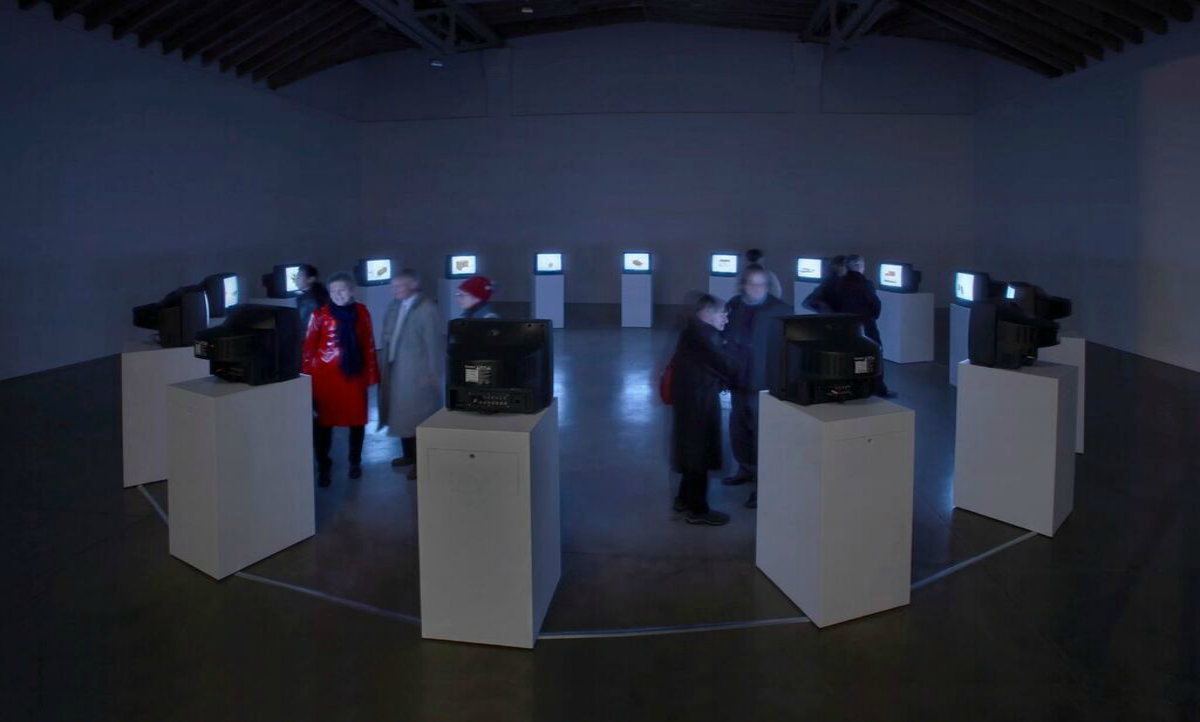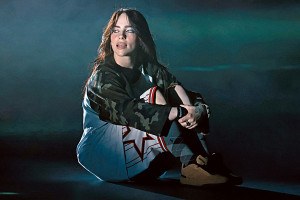The ICA Turns Artists into Curators at ‘The Artist’s Museum’

Christian Marclay’s Shake Rattle and Roll (fluxmix) (2005), photo courtesy ICA
The ICA’s newest exhibition, “The Artist’s Museum,” puts the power of curating into the hands of its artists to explore collecting, a common human impulse. While collecting may bring to mind baseball cards, stamps, or snow globes, this show is the culmination of 12 artists gathering the work of others to capture their visions of a common human experience.
Artists usually gather artworks and artifacts for inspiration, but in “The Artist’s Museum,” these collections are presented for the visitor to explore cultural history, gender, and digital culture. Living in the age of eBay and Google Images places a heavy burden on artists to choose images and objects that convey a message about human nature across subjects and cultures, says Mannion Family senior curator Dan Byers. But nearly unlimited accessibility to images and objects does have its perks, as visitors can see in the amount and variety of works that give each artist’s selection a distinct voice.
“In some ways, I’m thinking about this exhibition as museums within a museum,” says Byers. “Each artwork contains its own museum, its own logic.”
A major highlight of the exhibition is Anna Craycroft’s commission, The Earth is a Magnet (2016). The exhibit is made up of two rooms that mirror each other in layout. In one of the small galleries, Craycroft gathered photographs, letters, and patent applications of famed photographer Berenice Abbott, who was known for her pictures of New York City architecture, as well as the scientific images she provided for textbooks, which blurred the line between art and education. Abbott herself is currently being honored with an exhibit at the MIT Museum, where she made many of her most famous images, and which provided many of the resources Craycroft used. The overall effect Craycroft aims for is to offer a personal look at the avant-garde photographer.
“Even though this room has the feel of going into an archive, it’s so vibrant,” says Craycroft. “I was shocked when I saw the work all together, because I had seen it in all these different institutions, at how alive and powerful and tangible it felt.”
The collection of Abbott’s interdisciplinary interests and efforts is exemplary of the interdisciplinary nature of being an artist, Craycroft says. The exhibit’s other room contains several contemporary works by various artists with similar explorations into gender, society, and identity that echo and extend ideas found in other parts of the exhibition.
“For a show that has so many different artists, there’s an incredible sense of unity, which I think speaks to the desire of the show,” says Craycroft. “I think it feels like a love letter—each artist is writing a love letter, of sorts.”
Across the exhibition, Christian Marclay’s Shake Rattle and Roll (fluxmix) (2005) stands at attention, with sixteen television monitors arranged in a large circle so visitors can step in the middle of a buzzing Stonehenge. On the monitors, Marclay’s hands are seen examining and moving objects taken from museum displays in an effort to make musical medleys.
Byers says Marclay’s piece “thinks about a museum collection as something alive, rather than something dead or in storage.” Visitors in the Artist’s Museum may find themselves engaged by different parts of the exhibition at the same time, as noises and images can be heard across the exhibition to lend to the collection as a whole, Byers says.
A quote from German philosopher Theodor Adorno in the gallery’s introductory text summarizes the exhibition’s collaborative and engaging nature: “Works of art are part of the life of the person who observes them. They become an element of his consciousness.”
$15, on view through March 26, 2017, Institute of Contemporary Art, 25 Harbor Shore Drive, Boston, icaboston.org.


